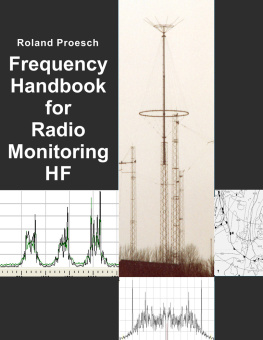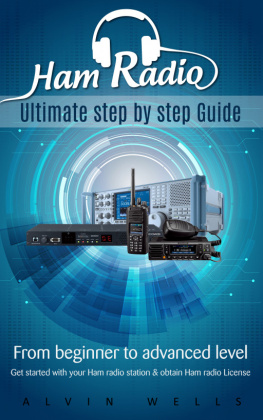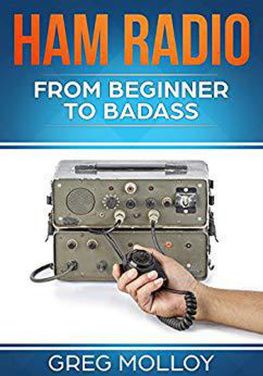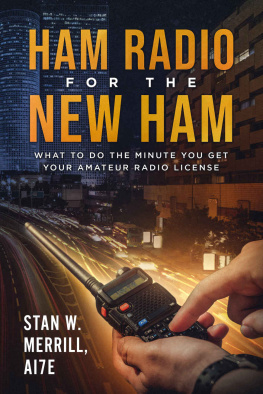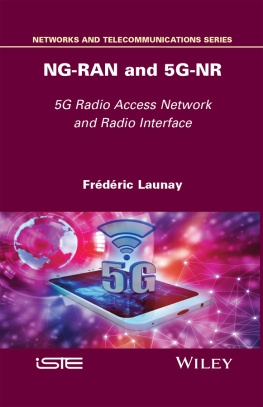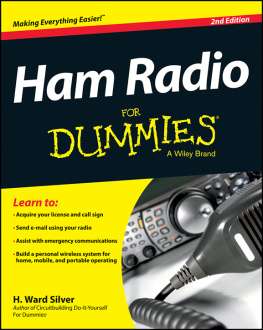Copyright 2015 by McGraw-Hill Education. All rights reserved. Except as permitted under the United States Copyright Act of 1976, no part of this publication may be reproduced or distributed in any form or by any means, or stored in a database or retrieval system, without the prior written permission of the publisher.
ISBN: 978-0-07-183292-2
MHID: 0-07-183292-0
The material in this eBook also appears in the print version of this title: ISBN: 978-0-07-183291-5, MHID: 0-07-183291-2.
eBook conversion by codeMantra
Version 1.0
All trademarks are trademarks of their respective owners. Rather than put a trademark symbol after every occurrence of a trademarked name, we use names in an editorial fashion only, and to the benefit of the trademark owner, with no intention of infringement of the trademark. Where such designations appear in this book, they have been printed with initial caps.
McGraw-Hill Education eBooks are available at special quantity discounts to use as premiums and sales promotions or for use in corporate training programs. To contact a representative, please visit the Contact Us page at www.mhprofessional.com.
Information contained in this work has been obtained by McGraw-Hill Education from sources believed to be reliable. However, neither McGraw-Hill Education nor its authors guarantee the accuracy or completeness of any information published herein, and neither McGraw-Hill Education nor its authors shall be responsible for any errors, omissions, or damages arising out of use of this information. This work is published with the understanding that McGraw-Hill Education and its authors are supplying information but are not attempting to render engineering or other professional services. If such services are required, the assistance of an appropriate professional should be sought.
TERMS OF USE
This is a copyrighted work and McGraw-Hill Education and its licensors reserve all rights in and to the work. Use of this work is subject to these terms. Except as permitted under the Copyright Act of 1976 and the right to store and retrieve one copy of the work, you may not decompile, disassemble, reverse engineer, reproduce, modify, create derivative works based upon, transmit, distribute, disseminate, sell, publish or sublicense the work or any part of it without McGraw-Hill Educations prior consent. You may use the work for your own noncommercial and personal use; any other use of the work is strictly prohibited. Your right to use the work may be terminated if you fail to comply with these terms.
THE WORK IS PROVIDED AS IS. MCGRAW-HILL EDUCATION AND ITS LICENSORS MAKE NO GUARANTEES OR WARRANTIES AS TO THE ACCURACY, ADEQUACY OR COMPLETENESS OF OR RESULTS TO BE OBTAINED FROM USING THE WORK, INCLUDING ANY INFORMATION THAT CAN BE ACCESSED THROUGH THE WORK VIA HYPERLINK OR OTHERWISE, AND EXPRESSLY DISCLAIM ANY WARRANTY, EXPRESS OR IMPLIED, INCLUDING BUT NOT LIMITED TO IMPLIED WARRANTIES OF MERCHANTABILITY OR FITNESS FOR A PARTICULAR PURPOSE. McGraw-Hill Education and its licensors do not warrant or guarantee that the functions contained in the work will meet your requirements or that its operation will be uninterrupted or error free. Neither McGraw-Hill Education nor its licensors shall be liable to you or anyone else for any inaccuracy, error or omission, regardless of cause, in the work or for any damages resulting therefrom. McGraw-Hill Education has no responsibility for the content of any information accessed through the work. Under no circumstances shall McGraw-Hill Education and/or its licensors be liable for any indirect, incidental, special, punitive, consequential or similar damages that result from the use of or inability to use the work, even if any of them has been advised of the possibility of such damages. This limitation of liability shall apply to any claim or cause whatsoever whether such claim or cause arises in contract, tort or otherwise.
In memory of Jack,
mentor and friend
About the Author
Stan Gibilisco, an electronics engineer and mathematician, has authored multiple titles for the McGraw-Hill Demystified and Know-It-All series, along with numerous other technical books and dozens of magazine articles. His work appears in several languages. Stan has been an active Amateur Radio operator since 1966, and operates from his station W1GV in the Black Hills of South Dakota, USA.
Contents
Introduction
This book will help electronics enthusiasts learn about two hobbies that escape the attention of most of todays technophiles: shortwave listening and Amateur (or ham) Radio. If you have no experience with shortwave listening and want to explore that hobby without getting a ham radio license, this book offers tips and advice. But ultimately, Id like to see you join the Amateur Radio fraternity. To that end, the book breaks down into eight chapters and four appendixes.
explains what radio waves are and how they travel. Youll learn how any sort of data can be imprinted on radio waves so that information, and not merely electromagnetic fields, can propagate over great distances.
In , youll learn the basics of shortwave listening (which I extend to allwave listening because modern radio receivers cover frequencies that range far above and below the traditional shortwave radio frequencies).
defines and explains the communications methods that ham radio operators use. I discuss the assets of the Internet, but emphasize that ham radio will work even when the Internet, and all other utilities, fail.
covers the assigned frequency ranges, called bands, that licensed hams use in the United States. Wave-propagation characteristics are discussed, comparing the various bands and offering advice as to those bands best suited for use at different times of the day, year, and sunspot cycle.
goes into some detail concerning the selection and installation of equipment for fixed ham radio stations.
offers information on how to set up mobile and portable ham radio stations, and relates my own experience operating these station types.
describes popular ham radio antennas and transmission lines for various frequencies and station types.
details how (and how not) to operate a ham radio station, once its up and running, using popular voice and digital modes.
The appendixes show the schematic symbols that electronics hobbyists, radio hams, and engineers use in circuit diagrams, Q signals for ham radio operators, and ten-code signals used by CB, law-enforcement, and emergency personnel.
The idea of communicating with other people over long distances without any artificial infrastructure to carry the signals has mesmerized me ever since I, five years old in the late 1950s, sat at the kitchen table in front of a tube-driven radio and said Calling! Calling! into the speaker. No one answered my calls into the ether then, of course, but they did after I got my first ham radio license in 1966. With a little study, a good deal of practice, and a few years of time, the dream morphed into reality! And people answer my signals now when I send CQ, the equivalent of Calling! Calling!, with a Morse code key or the digital interface of my microprocessor-controlled ham rig in my basement ham shack.
The fact that a few watts worth of energy waves can squirt from my deck-mounted or vehicle-mounted antenna into the atmosphere, that a minuscule bit of that energy can land in someone elses antenna on the other side of the world, and that we can communicate this way and can keep in contact by means of that energy even if every Internet server on the planet went downwell, the whole business fascinates me to this day. If you know what I mean, if radio holds some magic for you too, then youll get the most out of this book. But even if you only want to listen to broadcasts on a part of the radio spectrum largely forgotten in the fury of latter-day digital madness, this book has something to offer you.


